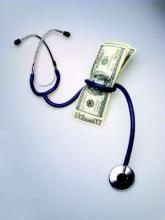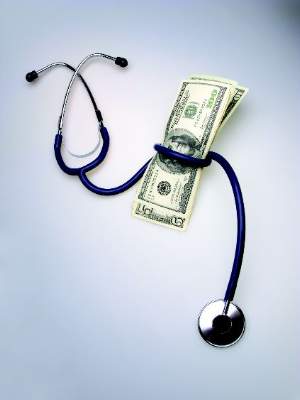User login
Seventy-four percent of physician specialties saw increases in their compensation in 2015, led by emergency medicine, according to the American Medical Group Association.
Overall, the weighted average increase in median compensation across all physician specialties was 3.1%, according to the 2016 Medical Group Compensation and Productivity Survey. Results were based on responses from 260 medical groups representing more than 92,000 providers.
“Once again, we see that physician compensation in general has remained relatively flat, with an average increase around 3.0%,” AMGA President and CEO Donald Fisher, PhD, said in a statement.
“We’ve seen peaks in certain specialties, and dips in others, and much of this reflects the cyclical nature of health care economics,” he added. For example, data from the 2014 survey saw gastroenterology had the largest year-over-year increase and in the 2016 survey, it was one of four specialties to see a decrease in compensation.
Individual specialties seeing the largest median total compensation increase year over year include emergency medicine (9.65% to $355,280), cardiac/thoracic surgery (8.12% to $645,112), cardiology (6.88% to $483.653), and hypertension and nephrology (6.72% to $329,750). Total compensation captures base and variable compensation plus all voluntary salary reductions, but excludes fringe benefits and employer payments to any type of retirement, pension, SERP or tax-deferred profit-sharing plan.
Four specialties saw median decreases in their compensation, including dermatology (–4.27% to $434,520), ophthalmology (–4.17% to $385,149), cardiology-cath lab (–0.81% to $584,118), and gastroenterology (–0.16% to $505,194).
Seventy-four percent of physician specialties saw increases in their compensation in 2015, led by emergency medicine, according to the American Medical Group Association.
Overall, the weighted average increase in median compensation across all physician specialties was 3.1%, according to the 2016 Medical Group Compensation and Productivity Survey. Results were based on responses from 260 medical groups representing more than 92,000 providers.
“Once again, we see that physician compensation in general has remained relatively flat, with an average increase around 3.0%,” AMGA President and CEO Donald Fisher, PhD, said in a statement.
“We’ve seen peaks in certain specialties, and dips in others, and much of this reflects the cyclical nature of health care economics,” he added. For example, data from the 2014 survey saw gastroenterology had the largest year-over-year increase and in the 2016 survey, it was one of four specialties to see a decrease in compensation.
Individual specialties seeing the largest median total compensation increase year over year include emergency medicine (9.65% to $355,280), cardiac/thoracic surgery (8.12% to $645,112), cardiology (6.88% to $483.653), and hypertension and nephrology (6.72% to $329,750). Total compensation captures base and variable compensation plus all voluntary salary reductions, but excludes fringe benefits and employer payments to any type of retirement, pension, SERP or tax-deferred profit-sharing plan.
Four specialties saw median decreases in their compensation, including dermatology (–4.27% to $434,520), ophthalmology (–4.17% to $385,149), cardiology-cath lab (–0.81% to $584,118), and gastroenterology (–0.16% to $505,194).
Seventy-four percent of physician specialties saw increases in their compensation in 2015, led by emergency medicine, according to the American Medical Group Association.
Overall, the weighted average increase in median compensation across all physician specialties was 3.1%, according to the 2016 Medical Group Compensation and Productivity Survey. Results were based on responses from 260 medical groups representing more than 92,000 providers.
“Once again, we see that physician compensation in general has remained relatively flat, with an average increase around 3.0%,” AMGA President and CEO Donald Fisher, PhD, said in a statement.
“We’ve seen peaks in certain specialties, and dips in others, and much of this reflects the cyclical nature of health care economics,” he added. For example, data from the 2014 survey saw gastroenterology had the largest year-over-year increase and in the 2016 survey, it was one of four specialties to see a decrease in compensation.
Individual specialties seeing the largest median total compensation increase year over year include emergency medicine (9.65% to $355,280), cardiac/thoracic surgery (8.12% to $645,112), cardiology (6.88% to $483.653), and hypertension and nephrology (6.72% to $329,750). Total compensation captures base and variable compensation plus all voluntary salary reductions, but excludes fringe benefits and employer payments to any type of retirement, pension, SERP or tax-deferred profit-sharing plan.
Four specialties saw median decreases in their compensation, including dermatology (–4.27% to $434,520), ophthalmology (–4.17% to $385,149), cardiology-cath lab (–0.81% to $584,118), and gastroenterology (–0.16% to $505,194).

